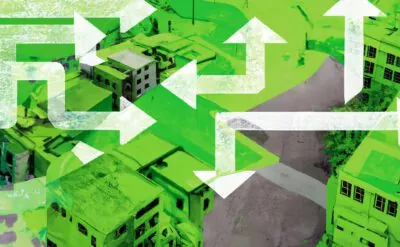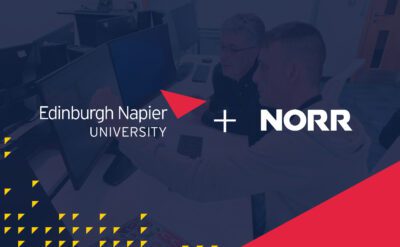As our modes of healthcare delivery become increasingly complex, more advanced techniques to understand, study and optimize care are needed. Efficiency is even more important when patients are in the throes of a life-threatening condition. The last thing that any team needs is to be searching for equipment scattered around the room while a patient is lying on the stretcher waiting for a life-threatening intervention. One tool to combat these inefficiencies and improve the design of clinical spaces is movement tracking. That is, technology that allows for removing extraneous information to highlight locations where clinicians move and concentrate their time.
Tracking movement helps promote unique design solutions
Non-healthcare industries have long understood the value of movement tracking. Look no further than UPS who studied the movement of their delivery vans. At first glance, it would seem to make sense that vans take the most direct route. Faster is better right? Think again.
The company extensively studied delivery routes and realized they could make substantial gas savings by routing their vehicles to avoid left turns. It may add extra miles on individual routes, but overall speed increased and both total mileage and gas consumption decreased. Why? Because left turns result in increased accidents and longer waits at lights. The result: 1,110 fewer trucks and 28.5M fewer miles. This counterintuitive initiative only resulted from focused movement tracking data.
How can movement tracking be integrated into healthcare design?
We used simulation coupled with movement tracking to study how a high-performance trauma team interacted with the clinical environment. We conducted the exact same simulation several times over the course of a year within our trauma bay. What did we find?
1. There are substantial differences in the distance traveled between clinicians even when they’re performing the same task. Why?
2. Small design changes can drastically alter how far people move. Not surprisingly, packaging essential equipment to perform a life-threatening procedure resulted in more efficient movement than if the equipment is scattered around the room.
3. Just studying the movement of people proved to be eye-opening, as clinicians suddenly realized how often they found themselves walking aimlessly around the room searching for equipment. The opportunity to observe movement tracking maps was the light bulb that many needed to prompt important design changes
The movement of three trauma team members during a simulated trauma resuscitation within the actual clinical space.
A key aspect to any design project is understanding the end-user. Movement tracking provides a unique look at how the end-user interacts with their space, a perspective that simply isn’t possible when the individual is questioned directly. When we asked clinicians about how long it took to find equipment or how far they traveled, their estimates weren’t even close. It’s clear that people find it conceptually difficult to accurately recall movement, especially under times of stress. Tracing maps clearly illustrate points of congestion and opportunities for design improvements.
The future of clinical space design includes a deeper appreciation of “how” work is done. What better way to understand the “how” than directly observing the path required to make it happen. Objective and focused efforts to track movement are essential design tools to optimize spatial utilization, reduce time and save money.
References:
- UPS – https://theconversation.com/why-ups-drivers-dont-turn-left-and-you-probably-shouldnt-either-71432
Petrosoniak et al. https://stel.bmj.com/content/5/2/78
Andrew Petrosoniak is an emergency physician, trauma team leader, simulation specialist and principal at Advanced Performance Healthcare Design (APHD). NORR and APHD are collaborating to rethink, recalibrate and reimagine the design process of healthcare facilities and spaces through simulation to inform the final architectural design.


